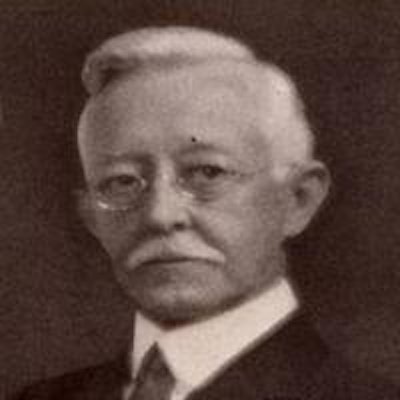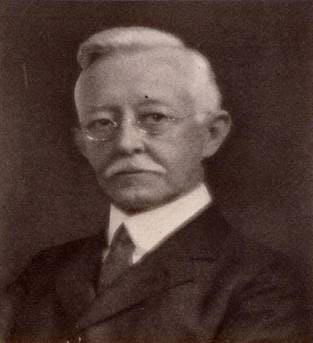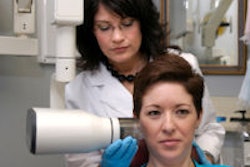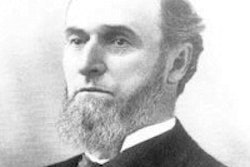
In April of 1862, 6-year-old Charles Edmund "Eddie" Kells Jr. stood on New Orleans' Jackson Avenue pondering his impending doom. Union Adm. David Farragut had run his flotilla of 18 men of war up the Mississippi River into cannon shot range of the city. Union troops led by Gen. Benjamin Butler were on the outskirts of New Orleans poised to invade.
Young Eddie was eyeing the crushed oyster shells used as ballast between the streetcar tracks in front of his house in the old French Quarter of the city. Years later he wrote, "The word went around that Farragut would "shell the city." Kells youthful imagination envisioned union sailors "going through the city picking up those oyster shells and throwing them at everyone they saw." He vowed to take cover at the "first sight of a Yankee" to avoid being shelled. The streetcars to which he was referring were premotorized double-deck cars drawn by mules.
Eddie's mother had died when he was 4. In his autobiography, he lamented at his inability to remember her, "taking me on her knee, holding my little face between her hands, and pressing her loving lips to mine or tucking me into my little crib and kissing me good night -- as all mothers do." He was convinced she had done all those things but sadly he couldn't remember. The one memory he did have was his mother leading him into her room and spanking him with a slipper for some forgotten childhood misdeed.
Kells' father, Dr. Charles Kells Sr., was a family dentist who practiced his craft in the lower story of the three-story family home. As a teenager Eddie was incorporated into his dad's practice doing odd jobs. He "saw and heard a good deal more of dentistry than he would under other circumstances," he wrote. He matriculated at New York Dental College in 1876, graduating two years later -- the two-year curriculum being the norm at the time.
While in New York, he befriended several lab technicians at Thomas Edison's Menlo Park lab in New Jersey, spending considerable after-class time there. "Here I saw many interesting things in electrics, and, among other things, some of the first electric incandescent lamps [light bulbs]."
These experiences at the Wizard of Menlo Park's lab led him to a lifetime of tinkering and a fascination with the new age of electricity then in its infancy. "The tallow candles and oil lamps [of my youth] gave way to gas and then to electricity," he mused nostalgically two years before his death in 1928. He marveled too at how transportation had evolved during his lifetime "from sailing ships, to trains, subway and elevated 'electric cars,' steamships, cars and to cap the climax, by aeroplane and dirigible."
 Charles Edmund Kells, DDS (1856-1928).
Charles Edmund Kells, DDS (1856-1928).
Kells returned to New Orleans in 1878, opening his own practice. He was destined to become one of the most famous dentists of his era, making major contributions to the profession. When he first entered practice, "there were no such animals as crowns and bridgework," no dental glues or cements, and "pivot teeth were mounted on single roots using a hickory dowel," he observed. Filling materials consisted of oxychlorid[e] of zinc, tin, gold, amalgam, and gutta-percha. In his autobiography, Three Score Years and Nine, he wrote that when he outfitted his first operating room in 1878, "there was very little to it. The chair operated by hand cranks, [an] old fashioned cuspidor, a Morrison foot engine [a foot pedal operated the drill], [a]cabinet and a washstand -- that's all there was." He noted that a family dentist in 1878 "extracted teeth and restored their loss by means of plates -- continuous-gum plates ... he filled root canals after a fashion, mostly with gold ... when the crown of a tooth broke off and the root was sufficiently sound, he attached a porcelain crown by means of a hickory dowel [called a ‘pivot tooth']."
According to historian James Wynbrandt, when New Orleans began electrifying in 1886, "Kells wired his office himself and connected it to the power grid outside his office, becoming the first dentist to use street current to power his electrical dental apparati." At the time, some dental equipment operated on batteries. Kells asserted he was the first dentist to electrify his office. In the book, The Excruciating History of Dentistry, Wynbrandt wrote: "electricity seemed to unleash an inventive energy in the doctor."
Over the course of the next 35 years, Dr. Kells developed and patented some 30 devices, ranging from a dental chair crank to an automobile jack to a fire extinguisher. His most important and enduring invention, though, was the automatic suction pump that sucks and drains saliva and blood during dental procedures. The device was quickly adopted by surgeons in operating rooms throughout the world. The suction pump is still in use today -- an indispensable tool in the medical and dental fields.
Dr. Kells' greatest contribution to dentistry was the dental x-ray. The x-ray was first developed in Germany in 1895 by the physicist Wilhelm Röntgen. Dr. Kells relates that when he first saw a demonstration at Tulane University: "Being interested, as I was, in electrics of all kinds, what more natural than that this phenomenon should interest me extremely? Well it did." Within a year, Dr. Kells developed his own machine and gave his first demonstration in July 1896 in Ashville, NC, to the Southern Dental Association. He created a special aluminum/rubber plate for holding the film with articulating surfaces into which the teeth could bite down. Dr. Kells' machine, like its generic counterparts at the time, required an exposure of between five and 15 minutes. In 1903, he established the New Orleans X-Ray Laboratory. In his autobiography, Dr. Kells wrote that he "believed the Roentgen ray [x-ray] is the greatest asset of the oral diagnostician."
Loretta Ichord in her book Toothworms & Spider Juice, noted that Dr. Kells held hundreds of his plates' in patients mouths while taking x-rays of their teeth, "ignorant of the damage the beams were doing to his hands." Dr. Kells tells the story best in his autobiography. The crude apparatus which he developed in 1896 (like all other x-ray machines at the time) required depth adjustment. "The variations in the character of the ray [which] were produced by a rheostat," he explained. At that time the conventional manner of "setting the tube ... was to hold the fluoroscope in one hand and place the other hand in front of the tube," he wrote in his autobiography. It was according to how the bones in the hand showed on the screen that determined the rheostat adjustment until the "right penetration was secured," he continued. "Setting the tube" only exposed his hand to the x-ray for a few seconds -- no harmful results were observed. However, 12 years after opening his lab (circa 1910), he began to suffer from malignant growths upon his left hand.
During the next 14 years, his hand was operated on 12 times. "Up until this time, every operation was a minor one and a success, and only one skin graft had been necessary," he noted. In 1915, yet another "ulcer" appeared on his left hand and, according to Dr. Kells, there appeared on the scene a very well-known advocate of the ultraviolet ray. The unnamed individual assured Dr. Kells that undergoing ultraviolet treatment would "positively cure this ulcer; and not only that, but it will clear up all these keratoses." "With a heart far lighter than it had been for many a year," Dr. Kells underwent 12 ultraviolet ray treatments -- three a week for four weeks. Essentially treating x-ray poisoning with even more radiation!
Almost immediately after the treatments ended, another growth started and grew aggressively. The finger, "went from bad to worse," Dr. Kells related. "Surgery, skin grafts, pinch grafts -- all failed. The finger was sacrificed to save my life." Over the next 10 years, Dr. Kells underwent 16 more operations on his hand, losing the remaining fingers, thumb, and finally the hand. In May of 1926, "conditions were such as to necessitate amputation about five inches below the elbow," Dr. Kells wrote. This was followed a year later with the amputation of the remainder of his arm at the shoulder. By 1928, the pain and agony became to great to endure, and Dr. Kells took his own life. "He was one of many x-ray martyrs of the time," Ichord noted.
Dr. Kells wasn't the only x-ray pioneer to so suffer. Shortly before his death, he wrote: "many of the early operators paid the price for being pioneers in the work." Like Dr. Kells, most would pay the ultimate price. In her article "The Miracle and the Martyrs," Sarah Zobel of the University of Vermont makes reference to a 1920s banquet honoring many radiation pioneers. A chicken dinner was the entrée: "Soon after the plates were set down, it became apparent that few of the attendees were able to enjoy the meal. After years of working with x-rays, so many had lost fingers or hands to radiation-induced damage that almost no one was able to cut the meat by themselves."
The first American to die of radiation exposure was Clarence Dally, an assistant to Thomas Edison. Edison began investigating x-rays almost immediately after Röntgen's discovery, assigning Dally the mundane detail task work. Dally's death in 1904 prompted Edison to abandon any further x-ray research. Edison was so fearful of them that that even on his death bed in 1931, he refused his physician's recommendation that he be x-rayed. "The Wizard of Menlo Park," Zobel noted, "who had watched his assistant die piece-by-piece so many years before, resolutely refused to submit to the x-ray."
Besides his innovative approach to dentistry, Dr. Kells is also credited with hiring the first female dental assistant. He was controversial during his lifetime. At the time, most dentists liberally extracted decaying teeth, while Dr. Kells espoused dental conservation and advocated saving "pulpless" [dead] teeth through restoration. C. M. Kratcher of Indiana-Purdue University wrote that Dr. Kells' ideas and theories have all been scientifically validated "almost one century later." "Because of Kells' persistence, dental professionals today continue to benefit from his inventions and procedures," Kratcher continued.
In 1928, the same year that 71-year-old Dr. Kells died, the first x-ray safety guidelines were adopted and issued by the International Congress of Radiology.
Daniel Demers is a semiretired businessman whose hobby is researching and writing about 19th and 20th century historical events and personalities. He holds a bachelor's degree in history from George Washington University and a master's degree in business from Chapman University. You can review his other published works at www.danieldemers.com.
Sources
Books
Ichord LF. Toothworms and Spider Juice. Brookfield, CT: Milbrook Press; 1999.
Kells CE. Three Score Years and Nine. New Orleans, LA; 1926.
Wynbrandt J. The Excruciating History of Dentistry. New York, NY: St. Martin's Press; 1998.
Articles
Jacobsohn PH, Kantor ML, Philstrom BL. The x-ray in dentistry, and the legacy of C. Edmund Kells: A commentary on Kells CE. The x-ray in dental practice. J Am Dent Assoc. 2013;144(spec suppl): 15S-19S. http://www.ada.org/sections/scienceAndResearch/pdfs/FebCommentenaryCentennial.pdf.Kells CE. The x-ray in dental practice. J Natl Dent Assoc. 1920;7(3):241-272. http://www.ada.org/sections/scienceAndResearch/pdfs/Kells_1920_part_one.pdf and http://www.ada.org/sections/scienceAndResearch/pdfs/Kells_1920_part_two.pdf.
Kells CE. Thirty years experience in the field of roentgenology. J Natl Dent Assoc. 1926.
Kracher CM. C. Edmund Kells (1856-1928). J Hist Dent. 2000;48(2):65-69.
Websites
Benjamin Butler (politician). Wikipedia website. https://en.wikipedia.org/wiki/Benjamin_Franklin_Butler_(politician). Accessed August 28, 2013.
David Farragut. Wikipedia website. https://en.wikipedia.org/wiki/Admiral_Farragut. Accessed August 28, 2013.
Dr. James Beall Morrison. Find a Grave website. https://www.findagrave.com/memorial/12449951/james-beall-morrison. Accessed September 1, 2013.
Smith J, Dixon D. C. Edmund Kells papers, 1875-1930, Louisiana Research Collection. Howard-Tilton Memorial Library, Tulane University, website. http://specialcollections.tulane.edu/archon/?p=collections/findingaid&id=48&q. Accessed September 1, 2013.
X-ray. Wikipedia website. https://en.wikipedia.org/wiki/Roentgen_ray. Accessed September 2, 2013.
Zobel S. The Miracle and the Martyrs. Dana Medical Library, University of Vermont Libraries website. http://library.uvm.edu/dana/news/?p=1977. Accessed September 4, 2013.



















